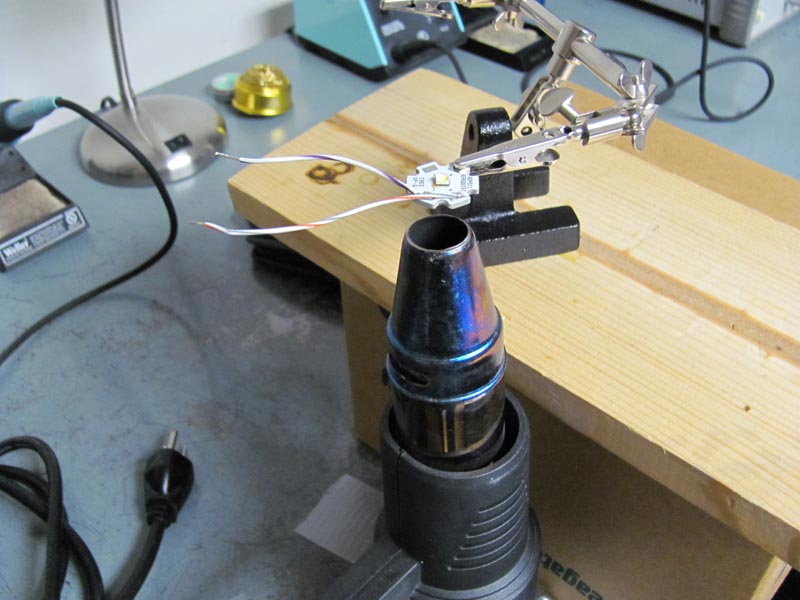Hey everyone.
So I've just ordered all the bits for what will be my first scratch build.
I'm going with 3 nichia 219B-E 4500k 92+ LED's on a noctigon 3XP.
I've decided to mount the LED's myself and am in need of some advice. I get the general idea of how it's done but I can't find a good detailed step by step with concise instruction. One video I watched the person put a line of solder paste across (bridging) all three pad on the board and then pressed the led in and heated it up. I take it the solder will 'run' off the non metal parts of the board under the led. Also how do i tell which side of a bare led is positive?
I have already had a search of the forum but i struggled to find anything.
Thanks in advance
Thom.
So I've just ordered all the bits for what will be my first scratch build.
I'm going with 3 nichia 219B-E 4500k 92+ LED's on a noctigon 3XP.
I've decided to mount the LED's myself and am in need of some advice. I get the general idea of how it's done but I can't find a good detailed step by step with concise instruction. One video I watched the person put a line of solder paste across (bridging) all three pad on the board and then pressed the led in and heated it up. I take it the solder will 'run' off the non metal parts of the board under the led. Also how do i tell which side of a bare led is positive?
I have already had a search of the forum but i struggled to find anything.
Thanks in advance
Thom.


